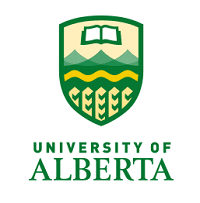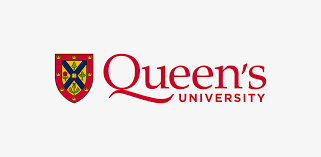CANADA
Overview of the Canada
Canada, located in North America, is bordered by the United States to the south and the Arctic Ocean to the north. It features diverse landscapes, including mountains, forests, and lakes, with a generally temperate climate that varies from coastal to continental. Known for its multiculturalism, Canada has a high standard of health care and an efficient transportation network that includes modern public transit and extensive road systems.

Canada boasts a robust infrastructure with globally recognized cities such as Toronto and Vancouver. It consistently ranks high in global indices for quality of life and safety. The country is renowned for its welcoming stance towards immigrants, offering numerous opportunities in education, employment, and business. The inclusive environment and strong support systems ensure a secure and prosperous experience for newcomers.
Percentage Distribution of Non-Immigrant Visa Holders in Canada (2014-2023 In Percentage)
Percentage Distribution of Non-Immigrant Student Visa Holders in Canada (2014-2023 In Percentage)
VISAS
Climate and Seasons

SPRING
March to May
Min: -5°C to 5°C
Max: 10°C to 20°C

SUMMER
June to August
Min: 10°C to 15°C
Max: 20°C to 30°C

AUTUMN
September to November
Min: 5°C to 10°C
Max: 10°C to 20°C

WINTER
December to February
Min: -20°C to -5°C
Max: -10°C to 5°C
WHY STUDY IN CANADA?
Studying in Canada offers numerous advantages, including world-class education and diverse academic programs. Canadian institutions are renowned for their high academic standards and research opportunities. The country’s welcoming environment and multicultural society provide a rich cultural experience and a chance to build an international network. Canada’s quality of life is exceptional, with affordable healthcare and a safe, clean environment. Students benefit from a strong support system, including work-study programs and pathways to permanent residency. Additionally, Canada’s natural beauty and vibrant cities offer a balanced lifestyle, combining educational excellence with recreational opportunities. With its strong economy and numerous post-graduation opportunities, Canada is an ideal destination for students seeking a globally recognized education and a promising future.
COURSES
Computer Science
Business Analytics
MBA
Mechanical Engineering
Major Courses Opted by Students (2014-2023)

Test Preparation at PVR Global Educational Services
PVR Global Educational Services offers tailored training for GRE, IELTS, PTE, SAT, GMAT, and Duolingo tests. Expert instructors provide personalized study plans, practice materials, and mock exams to boost proficiency in reading, writing, listening, speaking, and quantitative skills. Flexible scheduling and comprehensive support help students achieve high scores and succeed in their academic and professional endeavors.
Quick Facts about Canada
Canadian universities and colleges offer world-renowned programs and research opportunities, consistently ranking among the best globally.
A wide range of courses and disciplines are available, catering to various interests and career goals.
Canada’s welcoming atmosphere supports a diverse student body, fostering global connections and a rich cultural experience.
Compared to other top study destinations, Canada offers relatively lower tuition fees and cost-effective living options.
Students can work part-time during studies and full-time during breaks, gaining valuable experience and supporting themselves financially.
Canada provides pathways to permanent residency, allowing international students to stay and work after completing their studies.
Known for its safety and inclusivity, Canada ensures a secure and supportive environment for students from all backgrounds.
Courses Opted by International Students in Canada (2014-2023 In Percentage)
Education System in Canada
In Canada, primary education starts at age 5, covering grades K-6. Secondary education spans grades 7-12. The grade system uses letter grades with percentage scores, and the average duration is 12 years. Public schooling is mostly free, with optional fees for supplies and extracurricular activities.
Tertiary education includes colleges and universities offering advanced programs. The grade system continues with letter grades and percentages. Programs usually last 2-4 years, with average fees ranging from CAD 7,000 to CAD 29,000 per year, depending on the institution.
A Bachelor’s degree typically requires 3-4 years of study. The grade system includes letter grades and GPA. Average fees are CAD 7,000 to CAD 29,000 per year.
A Master’s degree usually takes 1-2 years to complete. It uses letter grades and GPA for assessment. Average fees are CAD 8,000 to CAD 30,000 per year.
A Doctorate degree requires 3-6 years of study and research. The grading includes letter grades and comprehensive exams. Average fees range from CAD 10,000 to CAD 35,000 per year.

Identifying the Right Institution
Evaluate universities based on their academic rankings, faculty credentials, and research output. High rankings often indicate quality education and research opportunities.
Review the range of programs and specializations offered. Ensure the university provides strong options in your field of interest or study.
Check if the university is accredited by recognized bodies. Accreditation ensures the institution meets educational standards and provides a valid degree.
Assess the quality of campus facilities, including libraries, labs, and student services. Modern facilities support a better learning and living experience.
Look for universities with robust support services for international students, including orientation programs, counseling, and assistance with visas and accommodations.
Consider the university’s location and the surrounding environment. Proximity to industry hubs, climate, and lifestyle can impact your overall experience.
Research the university’s graduate employability rates and career services. Strong industry connections and a good track record in job placement are crucial.
No of Students placed in different sectors (2014-2023 In Percentage)
Success Rate of Indian Students in the Canada by Sector (2014-2023 In Percentage)
Getting a Canada Visa
Identify the visa type that matches your purpose, such as study, work, or visit. Each visa category has specific requirements and conditions.
Review the specific requirements for your chosen visa type on the Canadian government’s official website. This includes eligibility criteria and necessary documents.
Collect all necessary documents, such as passport copies, proof of funds, and admission letters. Ensure all documents meet the specified requirements.
Register on the Canadian immigration website to start your application process. An account is necessary to manage your application and receive updates.
Fill out the visa application form online with accurate information. Double-check all details to avoid errors that could delay processing.
Submit the visa application fee online. Payment is typically made via credit card or other accepted methods. Keep the receipt for your records.
If your visa requires biometrics, schedule an appointment at a designated center. Provide fingerprints and a photo as part of the identification process.
Prepare for and attend an interview if requested. Be ready to answer questions about your application, travel plans, and purpose of visit.
Allow time for your application to be processed. Processing times vary depending on the visa type and current workload of the immigration office.
Once approved, you will receive your visa. Review the visa details carefully and ensure they align with your travel plans and application.
Stay organized and keep copies of all documents. Monitor your application status regularly and be prepared to provide additional information if requested.
List of Universities










Intake details
Intake | Start Dates | Remarks |
|---|---|---|
Fall | September | Main intake for most programs. |
Spring | May | Limited programs available. |
Summer | July | Some programs offer summer intake. |
Winter | January | Main intake for most programs. |
Deadlines
Deadline Type | Fall Intake | Spring Intake |
|---|---|---|
Scholarship Deadlines | February - April | September - October |
Admission Deadlines | May - July | October - November |
Best Time to Start the Process | September - November | April - June |
Last Date to Apply for Admission | July 1 - August 15 | November 15 - December 1 |
Documents required
Document Type | Requirements | Remarks |
|---|---|---|
Passport | Valid passport with at least 6 months validity | Ensure it is not expired or about to expire. |
Application Form | Completed and signed application form | Accurate and complete information required. |
Proof of Funds | Bank statements, scholarship letters, or financial guarantee | Must show sufficient funds for tuition and living expenses. |
Transcripts | Official transcripts from previous institutions | Must be in English or accompanied by a certified translation. |
Letters of Recommendation | Typically 2-3 letters from teachers or employers | Should highlight academic or professional achievements. |
Statement of Purpose | Personal statement outlining goals and reasons for applying | Tailored to the specific program and university. |
Resume/Curriculum Vitae | Detailed resume outlining educational and work experience | Include relevant achievements and skills |
English Proficiency Test Scores | IELTS, TOEFL, or other accepted tests | Required if English is not your first language. |
Application Fee | Proof of payment for application fee | Fee amount varies by university. |
Passport Photos | Recent passport-sized photographs | Usually required for identification purposes. |







